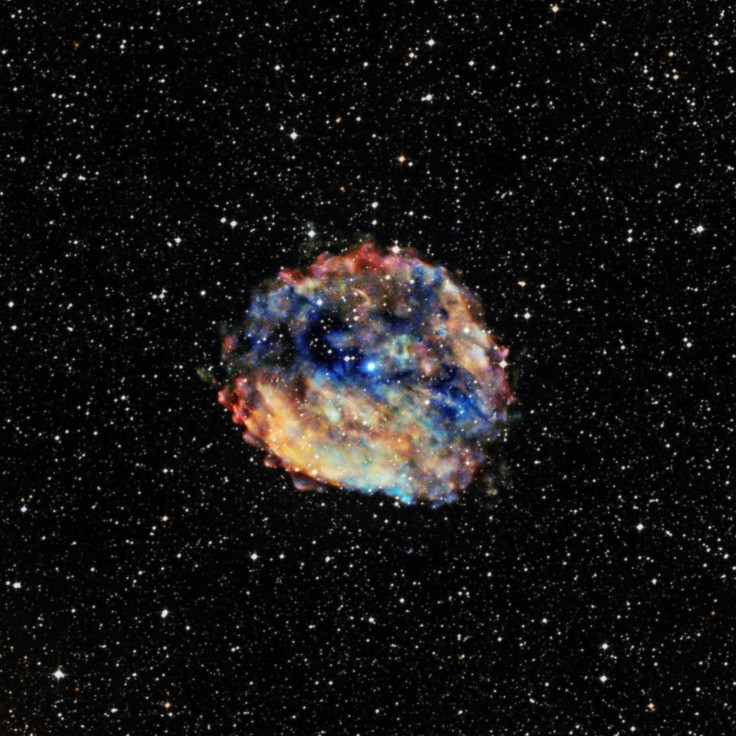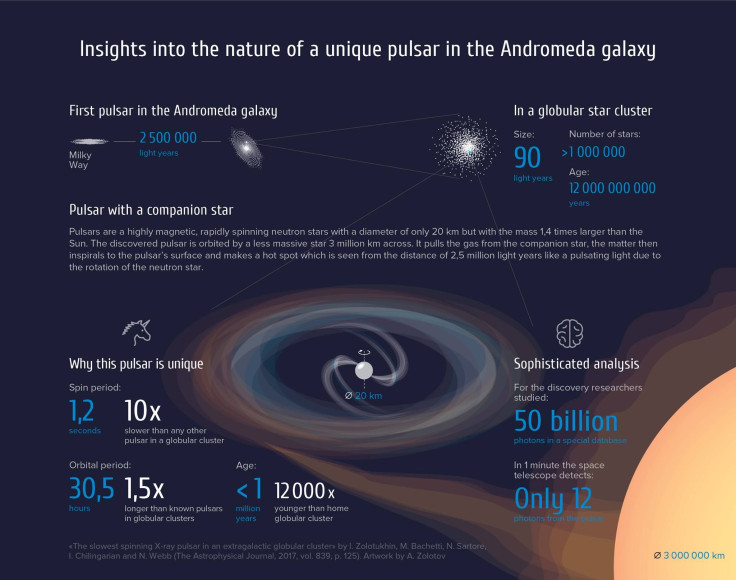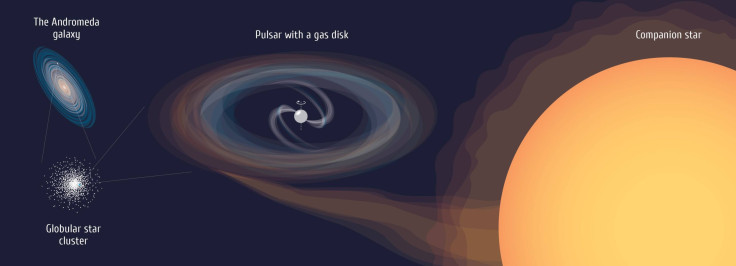XB091D, A ‘Rejuvenating’ X-Ray Pulsar In Andromeda Galaxy, Observed By Astrophysicists

When stars of a certain mass — not big enough to become black holes but big enough to explode as a supernova — collapse, they often turn into neutron stars. Neutron stars can also be classified as pulsars or magnetars, depending on whether they are rotating and the strength of their magnetic fields. A pulsar is called so because of the radiation it emits, which from our observation point on Earth looks like a regularly pulsating source.
Pulsars are also highly magnetized and rotate very rapidly, completing hundreds of revolutions in a second. But over time, as they lose mass and energy, they slow down to one revolution every few seconds. However, they can pick up the pace again if a passing star comes close enough for them to start feeding off it. And that is precisely what astrophysicists have noticed happening in the neighboring Andromeda galaxy.

In a paper published Tuesday in the Astrophysical Journal, scientists from the Lomonosov Moscow State University (LSMU) described XB091D, an ultra-slow and relatively young pulsar that is situated in one of the oldest globular star clusters in Andromeda. It is the slowest rotating of all known pulsars in globular clusters, completing a revolution every 1.2 seconds, over 10 times slower than the previously known slowest pulsar of its kind.
But it has reached this point after it began accelerating less than a million years ago. Around that time is when it start “rejuvenating” — feeding off matter from a companion star which entered into a binary system with XB091D. Using observations made by the XMM-Newton space observatory between 2000 and 2013, the scientists found XB091D (initially discovered by Italian astronomers several months ago) is an X-ray pulsar. The companion star has a mass about 20 percent less than the sun, and the binary system as a whole has a rotation period of 30.5 hours. Given the rate of acceleration, it will be another 50 thousand years before XB091D becomes a conventional millisecond pulsar.

XB091D is located about 2.5 million light-years away, in a cluster called B091D. The cluster itself is only about 90 light-years across but is home to millions of faint stars, some of which could be as old as 12 billion years.
“In our galaxy, no such slow X-ray pulsars are observed in hundred and fifty known globular clusters, because their cores are not big and dense enough to form close binary stars at sufficiently high rate,” Ivan Zolotukhin of LSMU said in a statement.
© Copyright IBTimes 2025. All rights reserved.





















